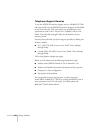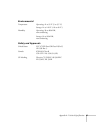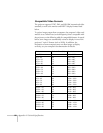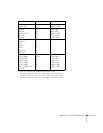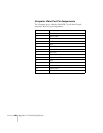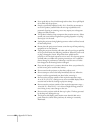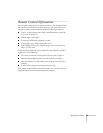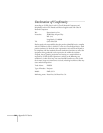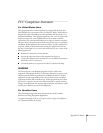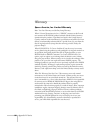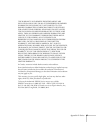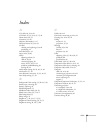
92 Appendix B: Notices
■ Never push objects of any kind through cabinet slots. Never spill liquid
of any kind into the projector.
■ Except as specifically explained in this User’s Guide, do not attempt to
service this product yourself. Refer all servicing to qualified service
personnel. Opening or removing covers may expose you to dangerous
voltages and other hazards.
■ This product includes a lamp component that contains mercury. Please
consult your state and local regulations regarding disposal or recycling.
Do not put it in the trash.
■ Unplug the projector during lightning storms or when it will not be used
for extended periods.
■ Do not place the projector and remote control on top of heat-producing
equipment or in a hot location.
■ Unplug the projector from the wall outlet and refer servicing to qualified
service personnel under the following conditions: When the power cord
or plug is damaged or frayed. If liquid has been spilled into the
projector, or if it has been exposed to rain or water. If it does not operate
normally when you follow the operating instructions, or if it exhibits a
distinct change in performance, indicating a need for service. If it has
been dropped or the housing has been damaged.
■ If you use the projector in a country other than where you purchased it,
use the correct power cord for that country.
■ Do not stand on the projector or place heavy objects on it.
■ Do not attempt to remove the lamp immediately after use. Allow the
lamp to cool for approximately one hour before removing it.
■ Do not use the projector outside of the required temperature range:
41 to 95 °F (5 to 35 °C). Doing so may cause an unstable display and an
excessive load on the fan, leading to projector damage.
■ Do not store the projector outside of the required temperature range—
14 to 140 °F (–10 to 60 °C)—or in direct sunlight for long periods of
time. Doing so may cause damage to the case.
■ Do not use the projector with the lens cap in place. The heat generated
by the lamp may damage the cap.
■ The liquid crystal display panel contains more than 99.99% active
pixels. However, 0.01% of the pixels may be missing or constantly
illuminated.



